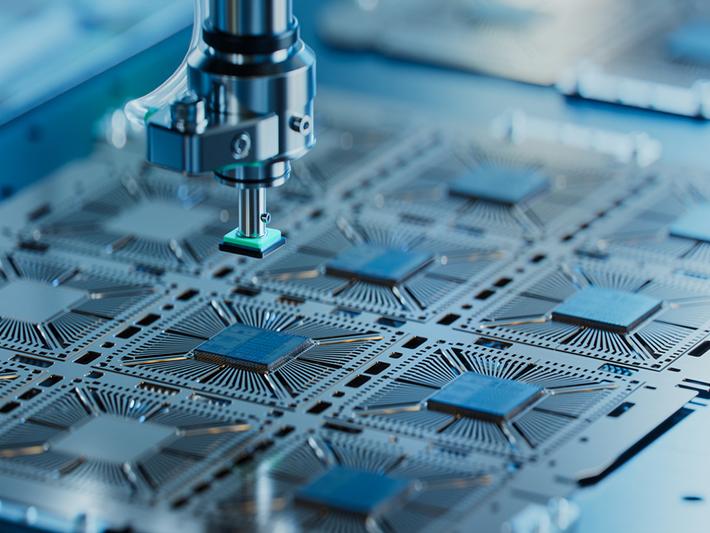
The power of international collaborations in the semiconductor field
Semiconductors are essential for modern electronic devices, AI hardware and economic efficiency and growth. How can we catalyse continued progress and innovation in this field? International collaborations are key, as Cindy Yi explains
You may also like
Popular resources
Semiconductors are materials with electrical properties that fall between those of conductors (such as copper) and insulators (rubber) and allow them to control electrical currents. This characteristic makes them essential for modern electronic devices, from computers and smartphones to medical equipment and advanced automotive systems. They form the backbone of global technological progress and economic growth.
In my field of expertise – electrical and computer engineering, with a special emphasis on integrated circuits, high-performance computing, and very large-scale integrated (VLSI) circuits and systems – semiconductors are both ubiquitous and elemental. Innovations in semiconductors can be nothing short of revolutionary in our work.
- Spotlight guide: What innovation needs to thrive in higher education
- For truly practical learning, embrace an interdisciplinary approach
- Leveraging international collaborations to tackle global health challenges
How international collaborations advance semiconductor technology
International collaborations allow us to advance knowledge, catalyse innovation and drive progress. This is especially pressing in rapidly evolving fields such as wireless networks or artificial intelligence, and in fields with life-changing implications and profound societal impacts, like biomedical engineering. Knowledge is cumulative, and sharing it allows us to streamline advances.
Advancing semiconductor technology is crucial because it provides:
Resilience against supply-chain disruptions
The semiconductor industry is deeply intertwined with global supply chains, and disruptions can have widespread economic consequences. The global chip shortage during the Covid-19 pandemic, for example, exposed vulnerabilities in semiconductor supply chains. Innovations in semiconductor technology can diversify supply sources, improve manufacturing adaptability, and reduce reliance on a limited number of suppliers, enhancing overall supply chain resilience.
Enhancing national security
Many countries leverage semiconductor production for defence, cybersecurity and advanced communication systems.
Boosting economic growth
The semiconductor industry is a major driver of global economic growth, supporting millions of jobs and generating trillions of dollars in revenue.
Undergirding burgeoning technology
Semiconductors are the backbone of AI, quantum computing, the Internet of Things, and 6G/NextG networks. Progress in these fields depends on faster, more efficient chips. And they enable next-generation consumer devices – think smartphones, autonomous vehicles and medical devices.
Making chips ‘greener’
Finally, new semiconductor materials (such as gallium nitride and silicon carbide) enable more efficient chips, reducing energy consumption and supporting green technology initiatives.
Why international semiconductor collaborations are key
International partnerships between universities, research institutions and technology companies are crucial for advancing semiconductor technologies. These collaborations offer multiple benefits, including:
- Access to global expertise: Semiconductor research spans multiple disciplines, including physics, materials science, electrical engineering, chemistry, optics and photonics, and nanotechnology. However, no single country or institution possesses all the necessary expertise and resources. International collaborations enable researchers to leverage specialised knowledge, cutting-edge facilities, and diverse perspectives that might not be available within a single nation.
- Use of diverse infrastructure and resources: Semiconductor fabrication and research require highly specialised and costly equipment. Many cutting-edge semiconductor facilities are located in specific regions, such as the US, Europe, Taiwan, South Korea and Japan. By working together, international partners can gain access to these critical infrastructures, avoiding duplication of effort and accelerating innovation.
- Shared research and development costs: Semiconductor development is expensive, with fabrication plants (fabs) requiring billions of dollars in investment. Collaborative research efforts help distribute financial burdens and accelerate breakthroughs.
- Bridging academia and industry across borders: Universities excel in fundamental research, while tech companies specialise in commercialising innovations. International collaborations ensure that theoretical advancements translate into practical applications on a global scale, allowing innovations to be adopted more rapidly worldwide.
- Strengthening manufacturing processes: Semiconductor manufacturing is inherently global, relying on raw materials, production and distribution networks spanning multiple countries. International partnerships improve material sourcing, production efficiency and (as mentioned earlier) resilience against supply-chain disruptions by diversifying manufacturing locations and catalysing cooperative solutions to logistical challenges.
- Developing a globally competitive workforce: Training and educating students through international collaborations ensures that they are career-ready and equipped with a broad, global perspective. Cross-border partnerships expose students to different technological standards, business practices and innovation ecosystems, making them more adaptable to the demands of the semiconductor industry.
- Offering experiential learning opportunities: Closely tied to developing a competitive workforce, hands-on experience is critical in the semiconductor field, and international collaborations enable industry-sponsored internships, with students applying their skills in real-world settings.
A case study: Upwards
In May 2023, the US-Japan University Partnership for Workforce Advancement and Research & Development in Semiconductors (Upwards) was launched. Upwards is an international partnership of 11 Japanese and US universities that is funded – and joined – by Micron Technology, Tokyo Electronics and the National Science Foundation. As a principal investigator on this project, I have witnessed firsthand the transformative impact of international collaboration in semiconductor education and workforce development.
A key objective of Upwards is workforce development. By increasing the number of students pursuing semiconductor careers, we aim to ensure a robust pipeline of talent. Collaborating with government and industry partners allows us to align education with industry needs, ensuring that graduates are job-ready.
As I mentioned earlier, hands-on experience is critical in this field, and Upwards facilitates industry-sponsored internships, with students working in real-world settings. Additionally, summer research camps and mentorship programmes allow students to gain firsthand experience, equipping them with the necessary tools for success in the semiconductor industry.
The future of global semiconductor collaboration
International partnerships like Upwards demonstrate the power of collective expertise. By integrating research, education and workforce development, we are not only advancing semiconductor technology but also preparing the next generation of engineers and innovators. Through continued collaboration, we can strengthen the global semiconductor ecosystem and drive innovation for years to come.
Yang (Cindy) Yi is a professor in the Bradley department of electrical and computer engineering, faculty member at the Virginia Tech in the DC area, and the director of Multifunctional Integrated Circuits & Systems (MICS) at Virginia Tech.
If you would like advice and insight from academics and university staff delivered direct to your inbox each week, sign up for the Campus newsletter.




Comments (0)
or in order to add a comment